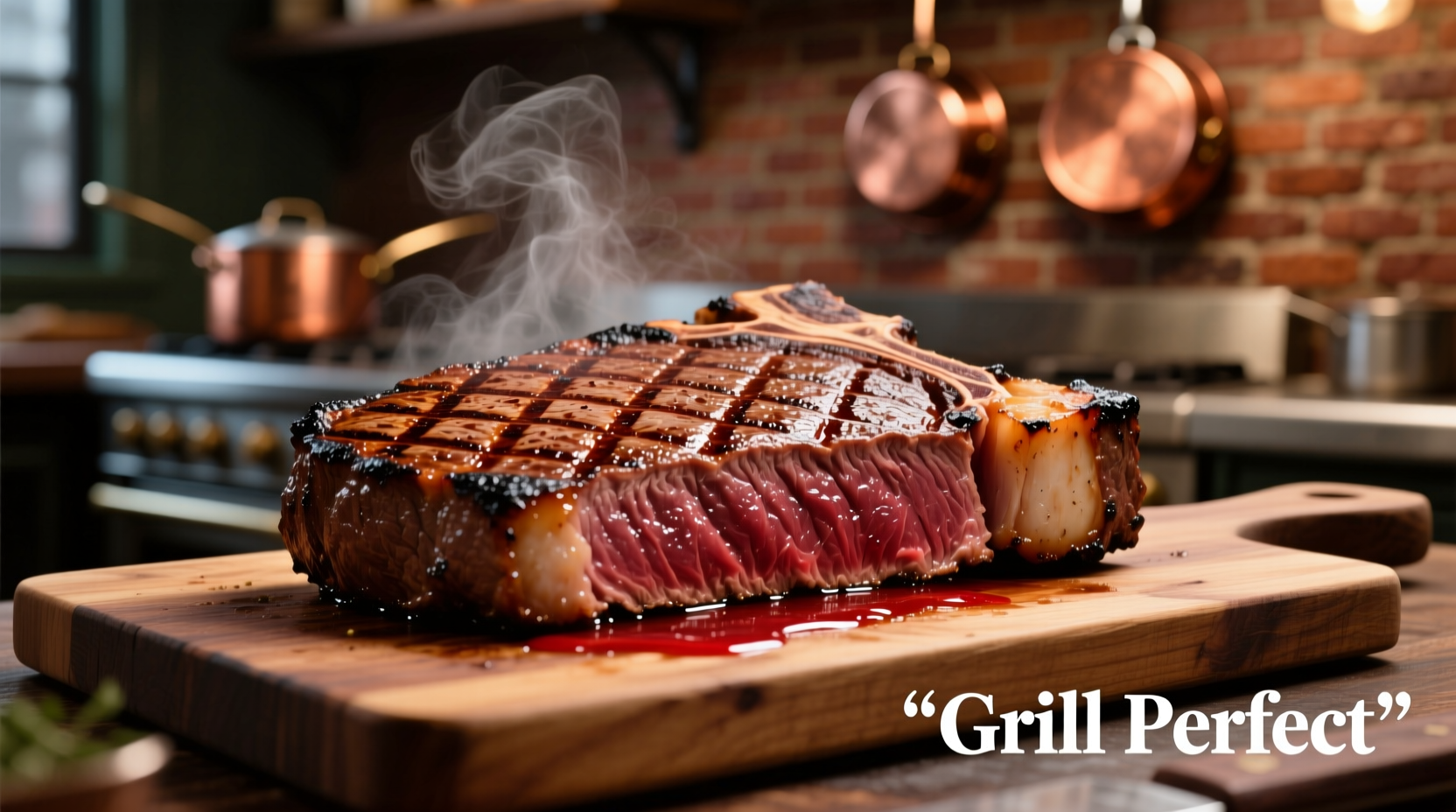Master the Perfect New York Strip on the Grill
Nothing beats a perfectly grilled New York strip steak—tender, flavorful, and cooked exactly to your preference. But getting that ideal doneness requires precise timing and technique. Whether you're a grilling novice or seasoned pro, this guide delivers the exact cooking times and professional techniques you need for steakhouse-quality results at home.
Why Timing Varies: Key Factors That Affect Grill Time
Before we dive into specific timing, understand these critical variables that impact how long to cook your New York strip:
- Steak thickness – A 1-inch steak cooks faster than a 1.5-inch cut
- Starting temperature – Room-temperature steaks cook more evenly than cold ones
- Grill temperature – High heat (450-500°F) creates better sear and shorter cook time
- Desired doneness – Rare requires significantly less time than well-done
- Grill type – Gas, charcoal, and pellet grills have different heat characteristics
| Thickness | Rare (120-125°F) | Medium-Rare (130-135°F) | Medium (140-145°F) | Medium-Well (150-155°F) |
|---|---|---|---|---|
| 1 inch | 3-4 min per side | 4-5 min per side | 5-6 min per side | 6-7 min per side |
| 1.25 inches | 4-5 min per side | 5-6 min per side | 6-7 min per side | 7-8 min per side |
| 1.5 inches | 5-6 min per side | 6-7 min per side | 7-8 min per side | 8-9 min per side |
Step-by-Step Guide to Grilling the Perfect New York Strip
Preparation: Setting Up for Success
Take your steak out of the refrigerator 30-60 minutes before grilling. This crucial step ensures even cooking throughout. Season generously with coarse salt and freshly ground black pepper—the classic combination that enhances rather than masks the beef's natural flavor. For best results, pat the steak dry with paper towels before seasoning to promote proper searing.
Grill Setup: Creating the Ideal Cooking Environment
Preheat your grill to high heat (450-500°F) with a two-zone fire—direct heat for searing and indirect heat for finishing. On a charcoal grill, pile coals on one side; for gas grills, turn burners to high on one side and low or off on the other. This setup gives you control when cooking thicker cuts that need initial searing followed by gentler heat.

Cooking Process: Timing and Technique
Place your New York strip on the hottest part of the grill. For medium-rare (the recommended doneness for this cut), cook for 4-5 minutes without moving it to develop a beautiful crust. Flip once using tongs (never pierce the meat with a fork), then cook for another 4-5 minutes. For thicker cuts (over 1.25 inches), move to indirect heat after searing to finish cooking without burning the exterior.
Professional chefs rely on internal temperature rather than time alone. Insert an instant-read thermometer horizontally into the thickest part of the steak:
- Rare: 120-125°F (remove at 115°F)
- Medium-rare: 130-135°F (remove at 125°F)
- Medium: 140-145°F (remove at 135°F)
- Medium-well: 150-155°F (remove at 145°F)
- Well-done: 160°F+ (not recommended for this cut)
When Standard Timing Doesn't Apply: Context Boundaries
These standard cooking times assume ideal conditions, but real-world variables require adjustments. According to the USDA Food Safety and Inspection Service, environmental factors significantly impact cooking times. On extremely cold days (<50°F), add 25-30% more cooking time. When grilling at high altitudes (above 3,000 feet), water boils at lower temperatures, extending cooking times by 15-20%. For steaks marinated in acidic ingredients like vinegar or citrus, reduce cooking time by 10-15% as acids partially “cook” the surface. Always verify with a thermometer rather than relying solely on timing.
The Evolution of Steak Grilling Techniques
Grilling techniques have evolved significantly since the mid-20th century. In the 1950s, most home cooks used basic charcoal grills with minimal temperature control, often resulting in overcooked steaks. The 1970s introduced gas grills with more precise heat management. Modern precision cooking, popularized by chefs like Bobby Flay in the 1990s, emphasized exact timing and temperature control. Today's reverse-sear method—starting with low-temperature cooking followed by high-heat searing—has revolutionized thick-cut steak preparation, though for standard New York strips (1-1.5 inches), the traditional high-heat sear remains most effective.
Critical Resting Period: Don't Skip This Step
After removing your New York strip from the grill, let it rest for 5-10 minutes (longer for thicker cuts). This crucial step allows juices to redistribute throughout the meat. Cutting too soon releases those precious juices onto your cutting board rather than staying in the steak. During resting, the internal temperature will rise 5-10°F—the “carryover cooking” effect that's why you remove the steak from heat before reaching your target temperature.
Troubleshooting Common Grilling Mistakes
Problem: Steak sticks to the grill grates
Solution: Ensure grill is properly preheated and clean. Oil the grates with a high-smoke-point oil using a grill brush before placing steak.
Problem: Uneven cooking with charred exterior but raw interior
Solution: For thicker cuts, sear on high heat then move to indirect heat to finish cooking. Use the thermometer—don't rely solely on time.
Problem: Gray band under the crust
Solution: Your grill isn't hot enough. Preheat for 15-20 minutes to achieve proper searing temperature.
Pro Tips for Flavor Enhancement
Elevate your New York strip with these professional techniques:
- Add aromatics: Toss rosemary or thyme sprigs directly onto coals for subtle herbal smoke
- Butter baste: During the last 2 minutes, add compound butter on top for rich flavor infusion
- Reverse sear for thick cuts: For steaks over 1.5 inches, cook at 275°F until 115°F internally, then sear
- Use the grill lid: Closing the lid creates an oven-like environment for more even cooking











 浙公网安备
33010002000092号
浙公网安备
33010002000092号 浙B2-20120091-4
浙B2-20120091-4